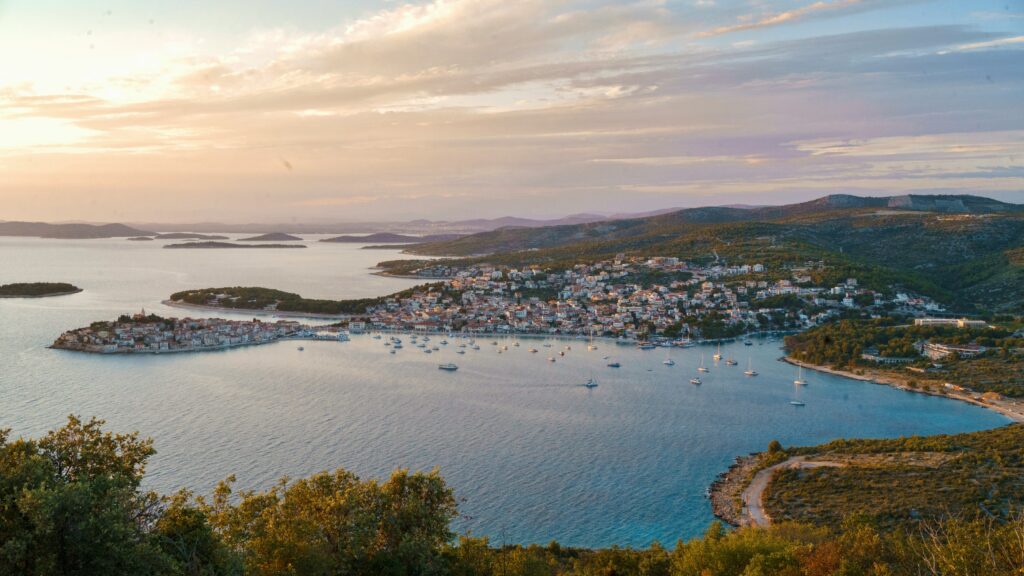June the 2nd, 2025 – The French AFP have spotlighted the devastation overtourism in Croatia has caused, seeing it become a burning issue.
As Novi list writes, with its heavily indented coastline, crystal clear waters and more than a thousand bays and islands, Croatia has experienced a tourism boom in recent years. Last year alone, more than 20 million people visited the country, according to the French news agency AFP.
But experts are concerned about the impact of overtourism in Croatia on marine life and the environment along its nearly 6,000-kilometre coastline. Sakarun Beach on Dugi Otok is often called the “Croatian Caribbean”, with tourist boats anchoring in the bay’s turquoise waters and heading for its dazzling white sands.

Some visitors, however, have complained about the unsightly Posidonia, a dark Mediterranean seagrass, on the shore, which has led to its removal. Heavy machinery has also removed sediment, resulting in the gradual disappearance of sandy beaches in Croatia over the past decade. Croatia already only has a small number of sandy and pebble beaches, while the rest are rocky and rugged.
“Croatia doesn’t have many sandy beaches, so it’s important to protect the sand we do have,” said geologist Kristina Pikelj from the Faculty of Science, University of Zagreb. In 2021, she launched a project to monitor the situation on Sakarun and educate locals and tourists about the vital role played by the so-called “lungs of the sea.”
Posidonia, an important carbon store and oxygen producer, is key to slowing the effects of climate change, and is also vital for marine habitats and protects beaches from erosion. Marija Meklav, one of three students who participated in the project to preserve the Posidonia in Sakarun, said: “We’re trying to raise public awareness and achieve something directly through field and laboratory work.
“Our generation can achieve something in this regard,” said the 24-year-old.

With the issue of overtourism in Croatia, local authorities are expanding beaches artificially all the time. In some locations, so-called beach feeding, which implies adding sediment to repair natural erosion, has been carried out significantly. It’s also the case that this technique has been used to cover naturally rugged, rocky areas with gravel. During the winter, the sea washes it away, meaning this costly process has to be repeated every single summer season.
Dalibor Carević of the Faculty of Civil Engineering at the University of Zagreb said that in places like Primošten, often called the “city of beaches,” this costly, unnatural practice has gone too far. Experts have repeatedly warned against removing hundreds of metres of rocks along one of the central beaches.
The rocks were ground up and mixed with quarried stones to create an artificial pebble beach that opened in 2011, a process that is repeated every year as a result of overtourism in Croatia and the need to make space for more and more people. Satellite images show that the shoreline at Mala Raduča beach has moved about 20 metres toward the sea in less than one decade.

Primošten’s long-time mayor, Stipe Petrina, however, said that improving the beaches was crucial for a city that depends entirely on tourism.
“You can’t have accommodation for 15,000 people and beaches for 2,000,” he told the French AFP, comparing it to a ski resort that hosts thousands of skiers but offers only a few hundred metres of slopes.
When tourism began to grow in the 1960s in Croatia, locals ground rocks to make it easier to access the sea.
“There used to be vineyards here that could have stayed where they were, but then we would all have emigrated. The question is which is better,” Petrina said to the French AFP about overtourism in Croatia.
“In the other bay of Primosten there is a rocky beach, but I don’t see many tourists there,” Petrina said.
The town of 2,800 people welcomed almost 90,000 tourists last year, mostly between July and August. In early May, German tourist Karin Hoggermann watched trucks bringing in new gravel to prepare the beach for the summer season ahead.
“For swimming, especially for children, it’s better if they fix the beach. Tourists wouldn’t come if they didn’t,” she said.
Unlike Italy, Spain, the Netherlands or France, which also “replenish” their beaches, few rivers flow into the Adriatic Sea in Croatia. This makes its ecosystem more vulnerable because it is less used to additional sediment input.

Excessive construction even in protected marine areas, concreting, disregard for regulations and huge fleets of charter boats are also taking their toll. As a direct result of overtourism in Croatia, the number of car parks, marinas, ports and roads is also growing.
One long-term solution is raising awareness among local residents and authorities and educating them, said experts, who are demanding more sustainable solutions.
“This conquest of the sea is not good and should be discouraged,” warned Carević.











